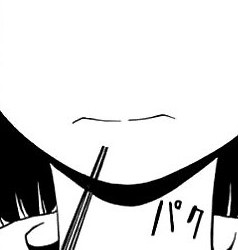#Kana Minakami
Text
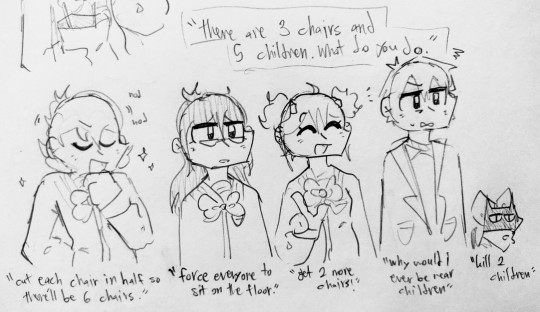
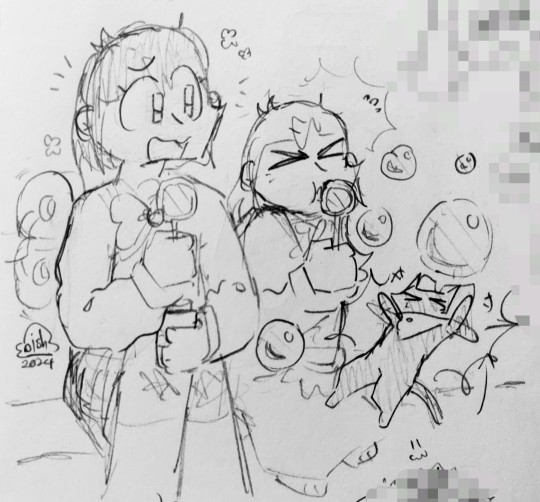
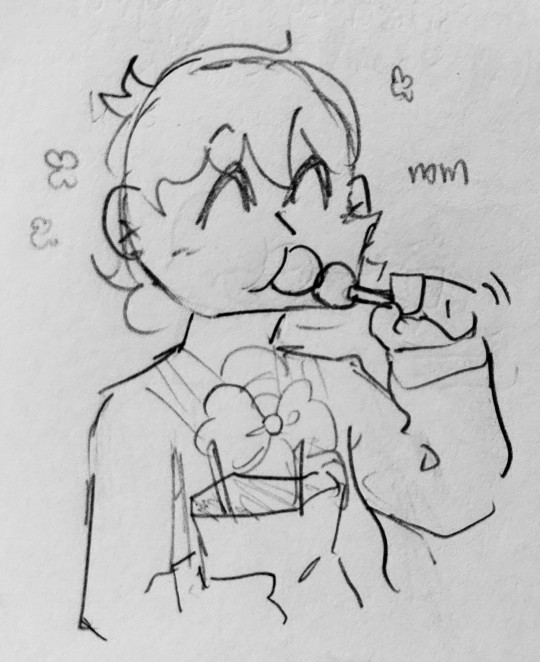
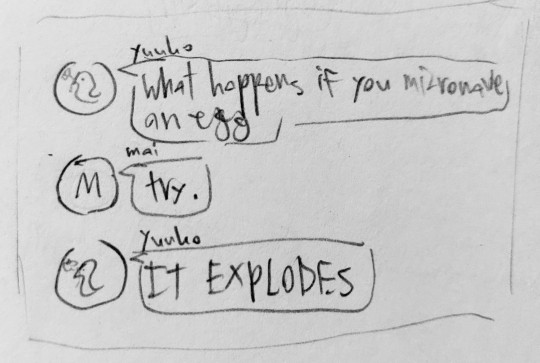

nichijou dump !
#oish scribblz#queueko aioi#rewatching nichijou ^_^#(happy)#nichijou#doodle#traditional#meme redraw#im projecting myself onto yuuko again hehe#I LOVE FEMTANYL !! 🔥#femtanyl#nano shinonome#hakase shinonome#sakamoto shinonome#mai minakami#mio naganohara#yuuko aioi#yuko aioi#kana nakamura
24 notes
·
View notes
Text



Some older Nichijou art
25 notes
·
View notes
Text

This was initially meant for
Nichijou Art Week 2022 Day #6 - Alternate Universe
but I ended up being too busy to finish it yesterday so I'm (unfortunately) posting it late. It's based off a Death Note(ish) AU @pealedout and I started
#delatoid#nichijou#yuuko aioi#mio naganohara#mono eye#pino#komagata#mihoshi tachibana#ogo#ogi#mai minakami#kana nakamura#hakase shinonome#nano shinonome#biscuit 2#nichijouartweek2022
56 notes
·
View notes
Text
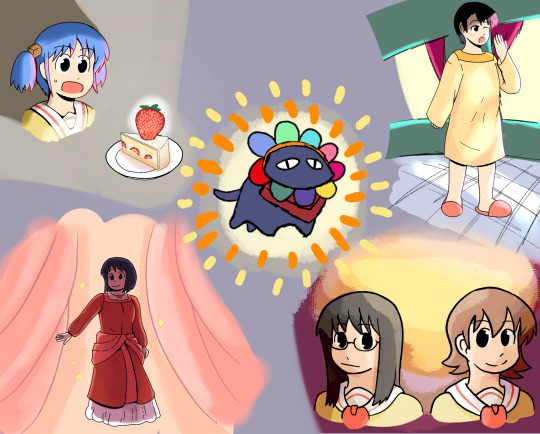

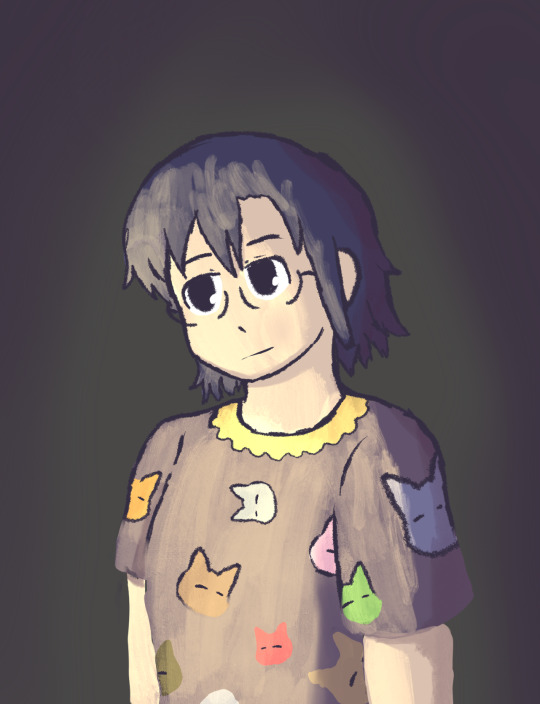
Dailies for nichijou art week 2022
#nichijou#sketch#yuuko aioi#yukko aioi#mio naganohara#nano shinonome#mai minakami#sakamoto san#sakamoto shinonome#kana nakamura
31 notes
·
View notes
Photo

#The Bones of An Invisible Person#Toumei Ningen no Hone#Kana Minakami#insecurity#seinen#Ogino Jun#my posts#my caps#Bones cap
11 notes
·
View notes
Photo



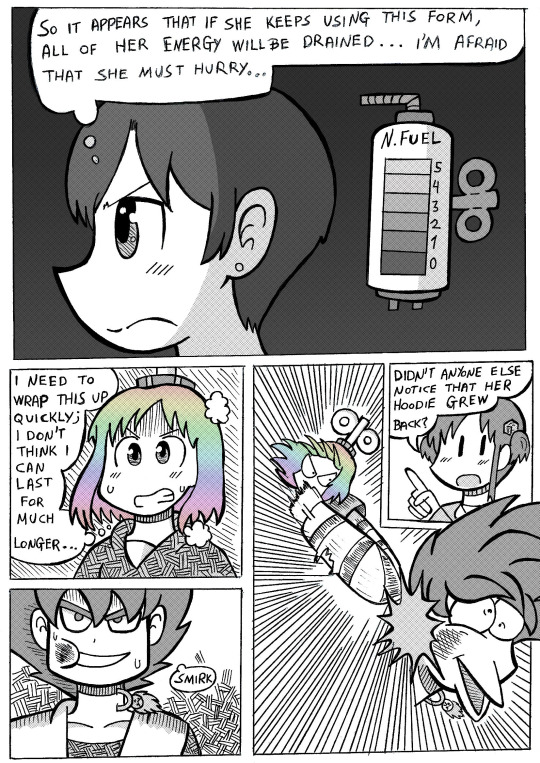

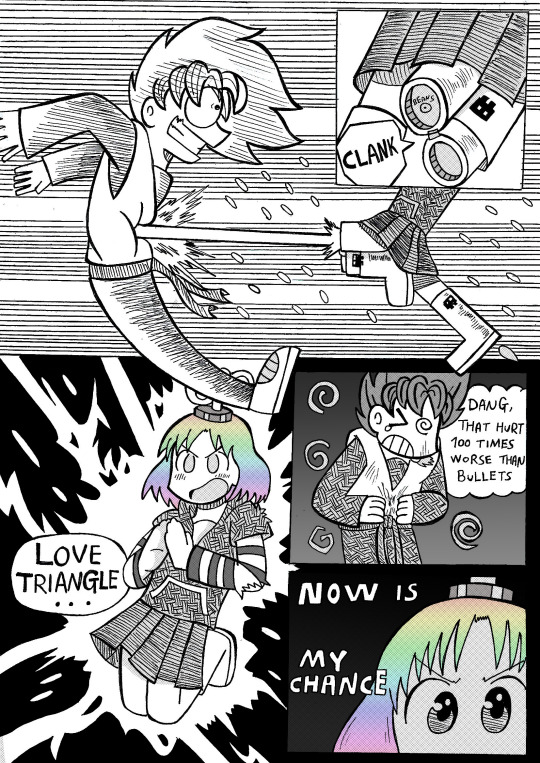

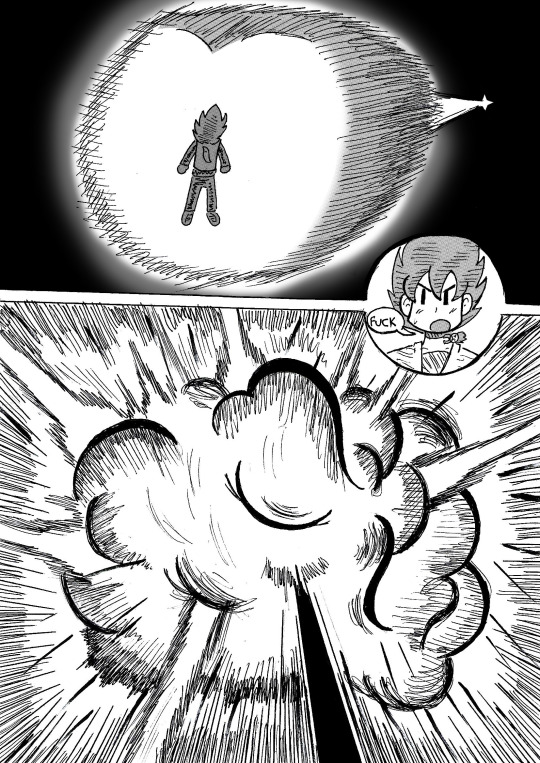

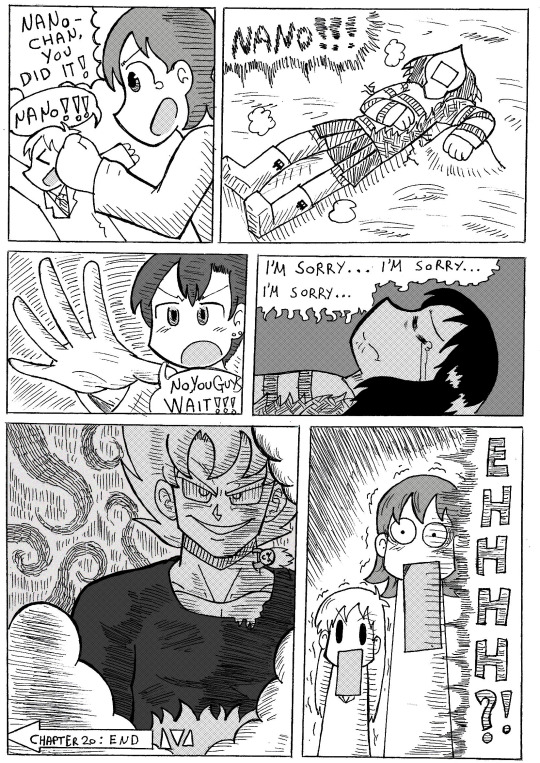
DRAGON BALL X NICHIJOU : CHAPTER 20
Nano has reached her full power form , Shinonome Complete takes the stage and is ready to fight against super saiyan blue Son Goku !. She may need to hurry cause even she doesn’t know how long this power will last!!!. Who will be the victor of this stupidly obscure fight!? find out next time on Dragon Ball x Nichijou : Chapter 21 !
This has to be most fun i’ve head drawing a chapter and i hope you liked it too!. As always support by liking , sharing and giving me your overall feedback , so i can keep drawing it!
Big thanks to @leatherbelt1295 for helping out with the script .
#Dragon Ball X Nichijou#chapter 20#Nano shinonome#Hakase shinonome#Son Goku#Yuuko Aioi#Mio Naganohara#Mai Minakami#Kana Nakamura#fan comic
121 notes
·
View notes
Photo

Happy 9th anniversary Nichijou!
#nichijou#pixel art#I know I'm late 4 days so I hope it's worth the wait#Everyone but Sekiguchi and the boys are here!#HappyAnniversaryNichijou!#sakamoto#yuuki aoi#mio naganohara#mai minakami#nano shinonome#hakase#misato#nakamura kana#alright im not panning to put every girl in the tags
103 notes
·
View notes
Photo

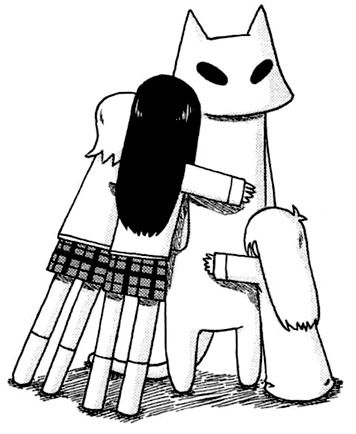
cinematic parallels
#nichijou#cats#wikihow#snaq#my girls#yukko aioi#yuuko aioi#mai minakami#hakase shinonome#nakamura sensei#kana nakamura#animals#maigai
22 notes
·
View notes
Text
It's still Nichijou's anime anniversary somewhere.

#i screwed the strict time limit about halfway through#nichijou#nano shinonome#yuuko aioi#mio naganohara#mai minakami#sakamoto-san#sasahara koujirou#sasahara kojirou#sakurai izumi#nakamura kana#nakanojo tsuyoshi#bera-chan#doodle#poochy#the slim jim guy#dave mirra freestyle bmx
49 notes
·
View notes
Photo

damnnthis piece took me like...3 hours..ALSO SPEEDPAINT HERE or UNDER THE CUT!! Art in art tag
please reblog i worked really hard on this and i’d love others to see it lol!!
youtube
#sunshan draws#nichijou#art#digital art#anime#doodle#my ordinary life#lineless art#yuuko aioi#nano shinonome#hakase shinonome#sakamoto san#mio naganohara#mai minakami#izumi sakurai#sasahara koujirou#misato tachibana#kana nakamura#manabu takasaki#makoto sakurai#yuria sekiguchi#principle shinanome#kenzaburou daiku#kousuke oura#tsuyoshi nakanojou#fe chan#weboshii#mihoshi tachibana#sucharaka trio#ogi
208 notes
·
View notes
Text
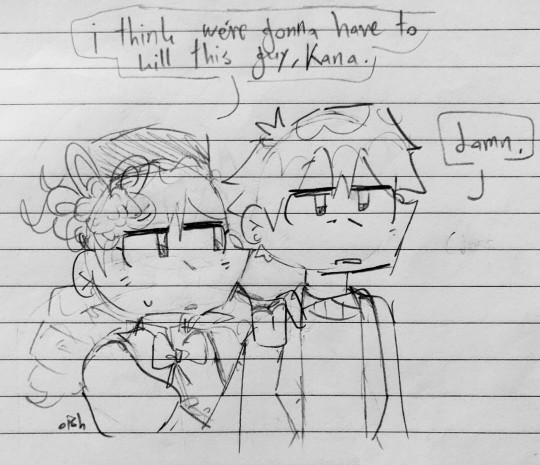

did the twitter meme thing (two versions bc i thought of a funnier pairing)
original under cut !
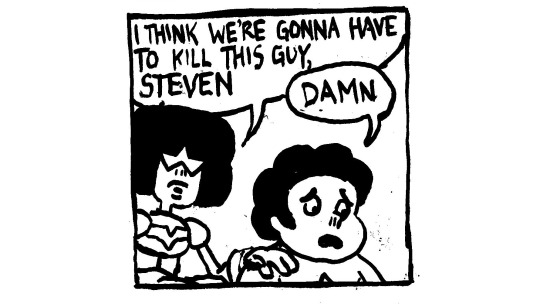
#oish scribblz#doodle#traditional#nichijou#madoka magica#puella magi madoka magica#mai minakami#kana nakamura#mami tomoe#homura akemi#meme redraw#crossover
23 notes
·
View notes
Text
What’s In a Book? Part 29
While going through my collection I managed to find a few books that have yet to be featured on here yet. I decided to go with this one as, upon further review, I noticed that it actually contained a wealth of information that I had previously ignored ^^;

Image of book’s cover courtesy of myself.
Hana Akari: Showa Meigiren (はなあかり: 昭和名妓連) - Brilliant Flowers: The Showa Period’s Finest Geisha by Kobunshi Katsura (桂小文枝) (ISBN Unknown).
Date of Publication: 1988
Language: Japanese and English (Some Essays and Names Only)
Format: Hardcover
Availability: Can be found up for auction on a fairly regular basis
Price: Anywhere from $30 - $80
Errors: 0
This book is interesting, and that’s putting it mildly. Basically, it provides us with some of the best raw data for its time: The names of the most prominent geisha in each district of each city across all of Japan. It is a literal who’s who guide to the karyukai across the country in the late 1980s and is illuminating both in small essays that can be found at the front and back of the book explaining various schools and styles, but especially because it provides us with images, most in full color, of these amazing women.
The book overall is divided into regions which are then broken down further from there. The regions, cities, and districts of each named geisha are:
Part 1: Hokkaido (北海道)
Set 1: Asahikawa (旭川) - Kofune (小舟)
Set 2: Sapporo (札幌) - Onobu (お信), Itoko (い登子), Izumi (いづみ), and Charako (茶良子)
Set 3: Otaru (小樽) - Komomo (小桃), Mametarō (豆太郎), Kiku (㐂久), and Gorō (吾朗)
Set 4: Muroran (室蘭) - Chonko (﹅子)
Set 5: Hakodate (函館) - Nantoki (喃登希) and Kohide (小ひで)
Part 2: Tohoku (東北)
Set 1: Morioka (盛岡) - Tsutamaru (都多丸)
Set 2: Hanamaki (花巻) - Kimiko (君子) and Keiko (桂子)
Set 3: Aomori (青森) - Chame (茶目)
Set 4: Yamagata (山形) - Kochō (小蝶) and Kinta (金太)
Set 5: Akita (秋田) - Chiyogiku (千代菊)
Set 6: Obara (小原) - Ikkyū (一休), Aki (秋), and Kogiku (小菊)
Set 7: Fukushima (福島) - Sakura (さくら) and Hidemi (秀美)
Part 3: Kanto (関東)
Set 1: Takasaki (高崎) - Kiyoko (清子)
Set 2: Kusatsu (草津) - Sankoma (三駒) and Harumi (春美)
Set 3: Sarugakyo (猿ヶ京) - Kikutaro (菊太郎), Koshizu (小静)
Set 4: Minakami (水上) - Yutaka (ゆたか)
Set 5: Oyama (大山) - Kunika (くに香)
Set 6: Tokyo (東京) - Fumie (冨美江) and Wakaryū (若龍)
Set 7: Yugawara (湯河原) - Okame (お加目), Matsue (松栄), and Taeko (多恵子)
Part 4: Chubu (中部)
Set 1: Niigata (新潟) - Chiyogiku (千代菊)
Set 2: Takada (高田) - Kazuko (加津子)
Set 3: Shibata (新発田) - Renko (れん子)
Set 4: Kamidayamadatogura (上山田戸倉) - Senryū (泉竜), Suzuyakko (鈴奴), Saizō (才三), and Utamaru (歌丸)
Set 5: Kamisuwa (上諏訪) - Chiyomaru (千代丸)
Set 6: Isawa (石和) - Miki (美樹) and Koyakko (小奴)
Set 7: Kōfu (甲府) - Misako (美佐子), Kimika (君香), and Hisayo (久代)
Set 8: Inuyama (犬山) - Misako (みさ子)
Set 9: Hamamatsu (浜松) - Gonza (権三), Ichitarō (市太郎), Otomi (乙美), Koman (小萬), Eiko (栄子), Hatsutarō (初太郎), Tsuruchiyo (鶴千代), Yasuyo (泰世), Sakura (佐久良), Sachiko (幸子), Toshie (利枝), Komomo (小百々), Momoko (百々子), Fumiya (二三弥), Mitsugiku (光菊), Azuma (吾妻), Akiko (明子), and Ichiha (市羽)
Set 10: Kanazawa Higashi/East (金沢東) - Koman (小まん)
Set 11: Kanazawa Kazuemachi (金沢主計町) - Hitoha (一葉) and Kyōko (京子)
Set 12: Kanazawa Nishi/West (金沢西) - Mineko (峯子), Sachiyo (幸代), and Marichiyo (まり千代)
Set 13: Fukui (福井) - Makiko (真㐂子) and Yurako (由良���)
Set 14: Yuzawa (湯沢) - Katsumaru (勝丸) and Hiromi (弘美)
Set 15: Nagoya (名古屋) - Fukuchiyo (福千代), Takako (敬子), Tsuruko (つる子), Mitsuyo (光代), Kiku (喜久), Emiya (英美弥), Sanchō (三長), Satoyo (里代), Mitsu (未津), Ayako (あや子), Kinmaru (金丸), Naoe (直枝), Fukuwaka (福若), Hisae (比三枝), Mako (間子), Yasuko (康子), Toshino (とし乃), Koie (鯉恵), Mariko (まり子), Katsuko (かつ子), Maiko (舞子), Kingyo (金漁), Hideka (秀佳), Chiyoe (千代江), and Motoko (素子)
Part 5: Kinki (近畿)
Set 1: Osaka (大阪)
Part A: Osaka Minami (大阪南) - Yukiharu (雪春), Kikutsuru (菊つる), Kikue (菊恵), Rikimaru (力丸), Kinko (きん子), Yukiji (ゆき路), Kōjirō (廣二郎), Yoshiko (よし子), Terugiku (照菊), Midori (美登利), Hankō (はん幸), Kazumi (かず美), Yukie (ゆき恵), Yūka (勇花), Suzuka (鈴佳), Masako (まさ子), Fukuemi (福笑), Masachiyo (政千代), Kikufumi (菊二三), and Yūko (祐子).
Part B: Osaka Horie (大阪堀江) - Temari (てまり)
Part C: Osaka Shinmachi (大阪新町) - Hatsuko (はつ子) and Tamao (玉緒)
Part D: Osaka Kitashinchi (大阪北新地) - Komaka (駒香), Umesada (梅さだ), Umetomi (梅十三), Suzume (寿々女), and Umemitsu (梅充).
Set 2: Kyoto (京都)
Part A: Gion Kobu (祇園甲部) - Komame (小まめ), Hisae (久栄), Katsuyū (かつ勇), Haruyū (春勇), Miyokazu (美代一), Fukusono (フク園), Satoharu (里春), Yoshigiku (義㐂久), Kōsono (晃園), Teruha (照葉), Mamekō (まめ晃), Fukuyū (福勇), Kanoko (かの子), Machiko (真知子), Kumiko (玖見子), Kohana (子花), Takayū (孝友), Teruchiyo (照千代), Takeha (竹葉), Nakako (奈加子), Mameyū (まめ勇), Sonoko (その子), Tomichiyo (斗美千代), Yoshimame (芳豆), Kofumi (小富美), Kanoju (かの寿), Mamechiyo (豆千代), Katsufuku (かつ福), Mameji (豆爾), Toyochiyo (豊千代), Katsuji (佳つ二), Ichigiku (市季久), Mamezuru (まめ鶴), Koman (小萬), Michiko (道子), Miyokichi (美与吉), Aika (愛香), Teruyo (照代), Fumichiyo (富美千代), Kikuharu (菊春), Masuko (ます子), Momoko (桃子), Kosode (小袖), Chōji (長治), Tomigiku (冨菊), Komasu (小ます), Emiji (恵美二), Dan-e (だん栄), Koyū (小ゆう), Yukiryō (幸良), Hanachiyo (花千代), Miyuki (美ゆき), Masaru (勝), Kanoji (かの次), Hiromi (廣美), Kotomi (小とみ), and Ainosuke (愛之介).
Part B: Pontocho (先斗町) - Miyofuku (美代福), Hisakō (久幸), Raiha (来葉), Momiha (もみ葉), Ichiko (市子), Shinatomi (シナ富), Mameharu (豆治), Hisafumi (久富美), Ichisen (市扇), Mameyuki (豆幸), Umeyū (梅佑), Ichitoyo (市豊), Mameshizu (豆志津), Ichisono (市園), Mamechiyo (豆千代), Hisaroku (久ろく), Ichimitsu (市光), Momizuru (もみ鶴), Hide-e (英江), Tomizuru (富鶴), Emiju (笑寿), Fudeya (フデ哉), Miyosaku (ミヨ作), Ichihiro (市宏), and Shinateru (シナ照).
Part C: Gion Higashi (祇園東) - Toyoji (豊治), Fumie (章栄), Chika (ちか), Tsurukazu (つる和), Tsunekazu (つね和), Tsunehisa (つね久), Masuko (ます子), Toyohisa (豊寿), and Masako (満佐子).
Part D: Miyagawa Cho (宮川町) - Wakaharu (若晴). Kanae (叶恵), Fumichō (富美蝶), Mikiryū (三木竜), Wakachika (若千加), Fukukazu (ふく和), Toshiyū (敏祐), Suzuchiyo (鈴千代), Hinachō (雛蝶), Chikayoshi (千賀俊), Mieko (美恵子), Fukusome (冨久染), Tane-e (種栄), and Tanekazu (たね和).
Part E: Kamishichiken (上七軒) - Tei (てい), Emi (恵美), Katsukiyo (勝㐂代), Tamafuku (玉福), Fukuzuru (福鶴), Hisazuru (久鶴), Tsuruzō (鶴三), Hisawaka (久若), Tamaryō (玉龍), Shimeyo (〆代), Katsumaru (勝丸), Naoko (尚子), Kokimi (小㐂美), and Kohan (小はん).
Set 3: Nara (奈良) - Suzumi (須寿美)
Set 4: Genrō (彦桹) - Kikuyū (菊勇) and Masaya (政弥).
Set 5: Otsu (大津) - Omasa (おまさ)
Set 6: Kinosaki (城崎) - Tomiyū (富勇) and Kanoko (佳乃子)
Set 7: Wakayama (和歌山) - Kikuchiyo (菊千代)
Set 8: Shirahama (白浜) - Tsutagiku (蔦菊)
Set 9: Osaka Imasato (大阪今里) - Koito (小糸) and Kichihide (吉秀)
Set 10: Imasato (今里) - Kichitama (吉玉)
Set 11: Kyoto Shimabara (京都島原) - Hana Ōgi Tayū (花扇太夫)
Part 6: Chūgoku (中国) and Shikoku (四国)
Set 1: Tamatsukuri (玉造) - Naoko (尚子), Yae (八重), and Kishi (貴志).
Set 2: Okayama (岡山) - Yakko (奴) and Chizu (知寿)
Set 3: Takamatsu (高松) - Hamachiyo (浜千代)
Set 4: Matsuyama (松山) - Ippei (一平)
Set 5: Tokushima (徳島) - Fukuyo (福代) and Akiyo (明代)
Set 6: Kochi (高知) - Kimiryū (君龍) and Sadamaru (貞丸)
Part 7: Kyushu (九州)
Set 1: Hakata (博多) - Mieko (美恵子)
Set 2: Kurume (久留米) - Okiyo (お清)
Set 3: Ureshino (嬉野) - Hisamatsu (久松), Komatsu (小松), Koshin (小新), Hisaryū (久竜), and Marikō (まり幸).
Set 4: Isao (武雄) - Fumiya (文弥)
Set 5: Beppu (別府) - Mitsugiku (光菊), Fujikatsu (ふじ勝), Umesono (梅園), and Tomiko (富子)
Set 6: Kumamoto (熊本) - Ayako (あや子)
Set 7: Kagoshima (鹿児島) - Aimaru (愛丸)
The only areas that I noted are missing are some of the hot springs towns. I’m not too sure why they were skipped over, but it’s possible that the author did not have any connections to them.
The most informative part that I admit I skipped initially is the small print under each geisha’s name: their natori specialty, natori teachers, and natori names. This means that we can trace back what schools were the main specialty of each region going back decades. Since this is invaluable for anyone studying geisha over time, I’ll write in what schools were followed, but I will keep names a secret. Districts are as follows:
Part 1: Hokkaido (北海道)
Set 1 Asahikawa (旭川) - Kineya (杵屋)
Set 2: Sapporo (札幌) - Wakayagi (若柳) for dance and Tadeko (蓼胡) for song
Set 3: Otaru (小樽) - Fujima (藤間) for dance and Tadeko (蓼胡), Kineya (杵屋), Kiyomoto (清元), Shunnichi (春日), and Tokiwazu (常磐津) for song.
Set 4: Muroran (室蘭) - None Given
Set 5: Hakodate (函館) - Tanaka (田中) for dance and Matsunaga (松永) for song.
Part 2: Tohoku (東北)
Set 1: Morioka (盛岡) - Tokiwazu (常磐津) for song.
Set 2: Hanamaki (花巻) - Wakayagi (若柳) for dance and Kineya (杵屋) for song.
Set 3: Aomori (青森) - None Given.
Set 4: Yamagata (山形) - Fujima (藤間) for dance.
Set 5: Akita (秋田) - None Given.
Set 6: Obara (小原) - None Given
Set 7: Fukushima (福島) - None Given.
Part 3: Kanto (関東)
Set 1: Takasaki (高崎) - Hanayagi (花柳) for dance and Okayasu (岡安) for song.
Set 2: Kusatsu (草津) - Hanayagi (花柳) for dance.
Set 3: Sarugakyo (猿ヶ京) - Kineya (杵屋) for song.
Set 4: Minakami (水上) - Kineya (杵屋) for song.
Set 5: Oyama (大山) - Kineya (杵屋)
Set 6: Tokyo (東京) - Taguchiko (田口湖) for dance and Kineya (杵屋) for song.
Set 7: Yugawara (湯河原) - Tanaka (田中) and Fujima (藤間) for dance and Tokiwazu (常磐津), Kineya (杵屋), and Tadeai (蓼相) for song.
Part 4: Chubu (中部)
Set 1: Niigata (新潟) - None Given.
Set 2: Takada (高田) - None Given.
Set 3: Shibata (新発田) - Okayasu (岡安) for song.
Set 4: Kamidayamadatogura (上山田戸倉) - Bandō (坂東) for dance and Tōsha (藤舎), Shunnichi (春日), Kineya (杵屋), and Kiyomoto (清元) for song.
Set 5: Kamisuwa (上諏訪) - Kineya (杵屋) for song.
Set 6: Isawa (石和) - Hanayagi (花柳) for dance and Mochizuki (望月) for song.
Set 7: Kōfu (甲府) - Hanayagi (花柳) for dance and Kiyomoto (清元), Okayasu (岡安), and Nagami (長巳) for song.
Set 8: Inuyama (犬山) - Nishikawa (西川) for dance and Kineya (杵屋) for song.
Set 9: Hamamatsu (浜松) - Fujima (藤間) and Fukuwara (福原) for dance and Kiyomoto (清元), Yoshimura (芳村), Shunnichi (春日), Nishikiharu (錦春), and Tokiwazu (常磐津) for song.
Set 10: Kanazawa East (金沢東) - Kamizaki (神崎) for dance.
Set 11: Kanazawa Kazuemachi (金沢主計町) - Fujima (藤間) for dance and Kineya (杵屋) and Mochizuki (望月) for song.
Set 12: Kanazawa Nishi/West (金沢西) - Nishikawa (西川) for dance and Tōsha (藤舎), Okayasu (岡安), and Kashida (堅田) for song.
Set 13: Fukui (福井) - Fujima (藤間) for dance and Utazawa (哥沢) for song.
Set 14: Yuzawa (湯沢) - None Given.
Set 15: Nagoya (名古屋) - Nishikawa (西川) for dance and Kiyomoto (清元), Tokiwazu (常磐津), Sumida (住田), Kineya (杵屋), Kishizawa (岸沢), Shunnichi (春日), and Fujimatsu (ふじ松) for song.
Part 5: Kinki (近畿)
Set 1: Osaka (大阪)
Part A: Osaka Minami (大阪南) - Onoe (尾上), Fujima (藤間), Bandō (坂東), and Hanayagi (花柳) for dance and Kiyomoto (清元), Kondo (今藤), Mochizuki (望月) and Tokiwazu (常磐津) for song.
Part B: Osaka Horie (大阪堀江) - Nishikawa (西川) for dance.
Part C: Osaka Shinmachi (大阪新町) - Nishikawa (西川) for dance and Kineya (杵屋), Shunnichi (春日), and Ogie (荻江) for song.
Part D: Osaka Kitashinchi (大阪北新地) - Nishikawa (西川) and Hanayagi (花柳) for dance and Kineya (杵屋), Tamura (田村), Uji (宇治), Tokiwazu (常磐津), Tagawa (田川), Kiyomoto (清元), and Yoshimura (吉村) for song.
Set 2: Kyoto (京都)
Part A: Gion Kobu (祇園甲部) - Inoue (井上) for dance.
Part B: Pontocho (先斗町) - Onoe (尾上), Nishikawa (西川), and Wakayagi (若柳) for dance and Tōsha (藤舎), Kondo (今藤), Nakamura (中村), Ogie (荻江), Bungo (豊後), Kineya (杵屋), and Tokiwazu (常磐津) for song.
Part C: Gion Higashi (祇園東) - Fujima (藤間) for dance and Tokiwazu (常磐津), Yanagi (柳), Nakamura (中村), Kineya (杵屋), and Tōsha (藤舎) for song.
Part D: Miyagawa Cho (宮川町) - Umemoto (楳茂都), Wakayagi (若柳), and Rokugō (六鄕) for dance and Kondo (今藤), Bungo (豊後), Kiyomoto (清元), Yanagi (柳), Yamakishi (山岸), Utazawa (哥沢), Tadeko (蓼胡), and Umeya (梅屋) for song.
Part E: Kamishichiken (上七軒) - Hanayagi (花柳) for dance and Tokiwazu (常磐津), Shunnichi (春日), Toyomoto (豊本), Kiyomoto (清元), Tōsha (藤舎), and Kiyoyuki (清之) for song.
Set 3: Nara (奈良) - Kineya (杵屋) for song.
Set 4: Hikone (彦桹) - None Given.
Set 5: Otsu (大津) - Yanagi (柳) for song.
Set 6: Kinosaki (城崎) - Wakayagi (若柳) and Onoe (尾上) for dance.
Set 7: Wakayama (和歌山) - Onoe (尾上) for dance.
Set 8: Shirahama (白浜) - Okayasu (岡安) for song.
Set 9: Osaka Imasato (大阪今里) - Kineya (杵屋), Shunnichi (春日), and Kiyomoto (清元) for song.
Set 10: Imasato (今里) - None Given.
Set 11: Kyoto Shimabara (京都島原) - None Given.
Part 6: Chūgoku (中国) and Shikoku (四国)
Set 1: Tamatsukuri (玉造) - Fujima (藤間) for dance and Kineya (杵屋) for song.
Set 2: Okayama (岡山) - Onishi (小西) for dance.
Set 3: Takamatsu (高松) - Kiyomoto (清元) for song.
Set 4: Matsuyama (松山) - Kiyomoto (清元) and Tamura (田村) for song.
Set 5: Tokushima (徳島) - Yoshitō (芳膛) for dance and Kiyomoto (清元) and Tamura (田村) for song.
Set 6: Kochi (高知) - Kiyomoto (清元) and Tamura (田村) for song.
Part 7: Kyushu (九州)
Set 1: Hakata (博多) - Kondo (今藤), Shunnichi (春日), and Kashida (堅田) for song.
Set 2: Kurume (久留米) - Tokiwazu and Shunnichi (春日) for song.
Set 3: Ureshino (嬉野) - Hanayagi (花柳) and Fujima (藤間) for dance and Matsunaga (松永) and Tagoto (田毎) for song.
Set 4: Isao (武雄) - Fujima (藤間) for dance.
Set 5: Beppu (別府) - Tokiwazu (常磐津), Kiyomoto (清元), and Hisago (瓢) for song.
Set 6: Kumamoto (熊本) - Hanayagi (花柳) for dance and Kondo (今藤) for song.
Set 7: Kagoshima (鹿児島) - Kineya (杵屋) and Tagoto (田毎) for song.
The reason why this book has no ISBN is because it was self published. The original cover price was ¥30,000, which is almost $300 USD. This price was likely set due to the vast amount of research done, including acquiring the many photographs, and printing costs. This price was also likely due to it being targeted at serious karyukai connoisseurs as that price in the 1980s would have been much higher now due to inflation. Nowadays you don’t have to pay as much for this book as most Japanese sellers see it as outdated and it can be found quite regularly on Japanese retail sites, such as Yahoo Japan Auctions or Rakuten.
The only “errors: that I could find were some spelling issues, but that’s because they’re using the Japanese way of writing Romaji and not the Hepburn System. So, I’m not counting them as errors, but rather just making note of them to anyone who purchases this book.
Rating: ✪✪✪✪ (out of 5)
35 notes
·
View notes
Text
Akebi's Sailor Uniform - Crunchyroll Winter 2022 Spotlight
Among Crunchyroll's Winter 2022 lineup is a little coming-of-age gem known as Akebi's Sailor Uniform. The series is set to start its run in Japan today, and you'll be able to catch it on Crunchyroll shortly after, so join us as we take a closer look at the sparkling series in our seasonal spotlight!
Official Website
Navigation
Launch Info
Official Trailers
Synopsis
Characters and Cast
Staff
Additional Info
Launch Info
Launch Time: January 8
Territories: North America, Central America, South America, Europe, Africa, Oceania, the Middle East, CIS, MENA and India
Show Page (coming soon!)
Official Trailers
youtube
Synopsis
Based on the manga by Hiro, the anime tells a slow, sparkling coming-of-age story of the protagonist Komichi Akebi and her classmates in a prestigious girls' junior high school.
Characters and Cast
Komichi Akebi
VA: Manatsu Murakami (Yuki in ODDTAXI)
Erika Kisaki
VA: Sora Amamiya (Aqua in KONOSUBA -God's blessing on this wonderful world!)
Touko Usagihara
VA: Akari Kito (Nezuko in Demon Slayer: Kimetsu no Yaiba)
Tomono Kojou
VA: Shion Wakayama (Sawa Echizen in Farewell, My Dear Cramer)
Kei Tanigawa
VA: Akira Sekine (Princess in Princess Principal)
Hitomi Washio
VA: Shizuka Ishigami (Ryota Sekiguchi in That Time I Got Reincarnated as a Slime)
Riri Minakami
VA: Yui Ishikawa (Mikasa Ackerman in Attack on Titan)
Hotaru Hiraiwa
VA: Momo Asakura (Iroha Tamaki in Magia Record: Puella Magi Madoka Magica Side Story)
Riona Shijou
VA: Azusa Tadokoro (Moroha in Yashahime: Princess Half-Demon)
Neko Kamimoku
VA: Miku Ito (Miku Nakano in The Quintessential Quintuplets)
Ai Tatsumori
VA: Mariya Ise (Sawa Nakamura in Flowers of Evil)
Ayumi Togeguchi
VA: Shiori Mikami (Historia Reiss in Attack on Titan)
Oshizu Hebimori
VA: Mitsuho Kambe (Ayame Nakahara in Kimi no Koe o Todoketai)
Yasuko Nawashiro
VA: Kaede Hondo (Sakura Minamoto in ZOMBIE LAND SAGA)
Mai Togano
VA: Haruka Shiraishi (Asirpa in Golden Kamuy)
Minoru Ookuma
VA: Konomi Kohara (Chitose Kaginoji in TONIKAWA: Over the Moon for You)
Staff
Original Creator
Hiro
Director
Miyuki Kuroki (The Idolm@ster SideM)
Series Composition
Rino Yamazaki (DARLING in the FRANXX)
Character Designer
Megumi Kouno (The Idolm@ster Cinderella Girls)
Art Director
Hisayo Usui
Yasunao Moriyasu
Music
Kana Utatane
Opening Theme Performer
1st-year Class 3 students "Hajimari no Setsuna"
Animation Production
CloverWorks (Fate/Grand Order - Absolute Demonic Front: Babylonia)
Additional Info
The Akebi's Sailor Uniform manga tells a slow, sparkling coming-of-age story of the protagonist Komichi Akebi and her classmates in a prestigious girls' junior high school. The author Hiro's soft drawing touch has gained a lot of support from both men and women. The first volume got reprints before it went on sale, and the series' total print run surpassed 500,000 copies as of last spring.
-------
Joseph Luster is the Games and Web editor at Otaku USA Magazine. You can read his comics at subhumanzoids. Follow him on Twitter @Moldilox.
By: Joseph Luster
1 note
·
View note
Photo

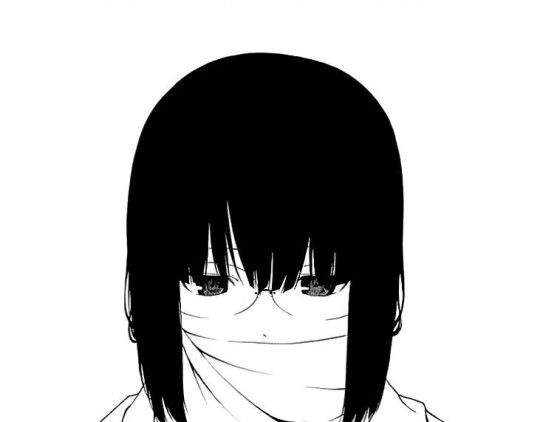
I don’t want to be your friend anymore.
#The Bones of An Invisible Person#Toumei Ningen no Hone#Kana Minakami#Aya Kinomiya#broken friendship#depression#seinen#Ogino Jun#my posts#my caps#Bones cap
8 notes
·
View notes

